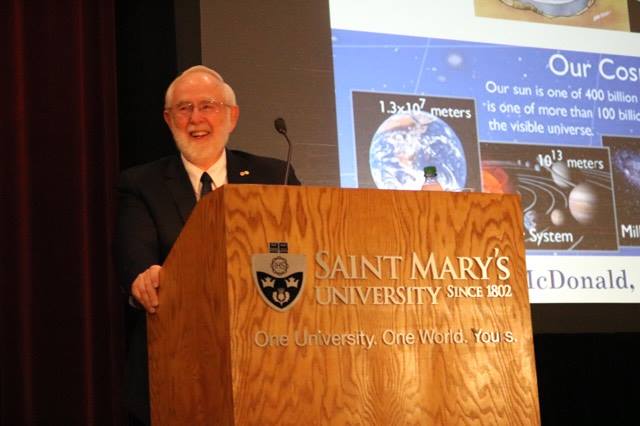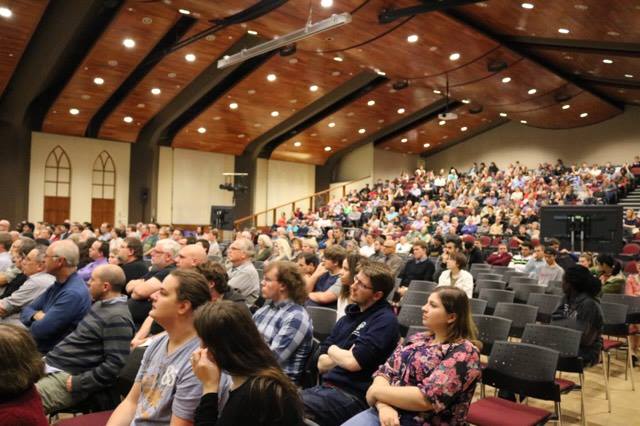Science
Nobel winner goes underground to study the sun
‘If you create something unusual … you can do things that were otherwise impossible’

caption
Nobel Laureate Dr. Arthur McDonald gives Dan MacLennan Memorial Lecture in Astronomy at Saint Mary’s University.
caption
Nobel laureate Dr. Arthur McDonald gives the Dan MacLennan Memorial Lecture in Astronomy at Saint Mary’s University.Canada’s most recent Nobel Prize winner made a discovery about the sun while working two kilometres underground.
“We were down about four CN towers,” Dr. Arthur McDonald says, “studying the tiniest particles that we know of.”
McDonald shared details of his findings, which won the 2015 prize for physics, with about 100 people as he gave the Dan MacLennan Memorial Lecture in Astronomy at Saint Mary’s University on Friday.
In an underground laboratory called the Sudbury Neutrino Observatory, deep in Vale’s Creighton mine in the Ontario city, McDonald discovered that neutrinos from the sun change from electron “flavour,” or type, to other flavours. By discovering neutrino oscillations he concluded that the particles have mass, helping scientists understand the power of the sun’s core more accurately.
His discovery rewrote the laws of physics, as it went against previous theories that said neutrinos lacked mass.
Neutrinos are the most basic particles that make up matter and are difficult to detect.
“Neutrinos can help us to understand the composition of the universe today and the origins of the universe 13.5 billion years ago,” said McDonald.

caption
A large audience heard McDonald talk about his discovery.As he took a sip of water from his glass on the podium, McDonald said his lab used 1,000 tonnes of heavy water, in a large basin called an ultra-clean detector, to measure neutrinos, which are impossible to see on the earth’s surface.
The laboratory was constructed deep underground with dense water to reduce cosmic rays and detect neutrinos.
He said he believes if you create something unusual and “never done before,” you can “do things that were otherwise impossible.”
With his team of scientists, McDonald travelled underground in miner cages to the neutrino lab, which he said is “cleaner than an operation room.” In nearly 15 years of studying in the lab, McDonald said “we had 70,000 showers in the course of the project.”
McDonald was the lead scientist at the lab and jointly received the Nobel Prize with physicist Takaaki Kajita.
Born in Sydney, he is a board member at the Premier Institute of Theoretical Physics and teaches at Queen’s University in Ontario.
International experiments are still taking place at the lab to study neutrinos and dark matter that influence the evolution of the universe. Dark matter is non-luminous material that exists in space, particles randomly moving around since the Big Bang.
You can take a virtual tour of McDonald’s lab at https://www.snolab.ca/facility/vr-tour.

